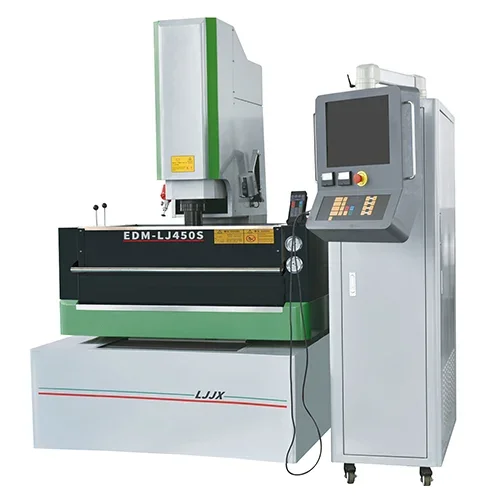In the field of precision manufacturing, CNC Mirror Spark Machines play a crucial role in achieving high levels of accuracy and precision. These machines utilize advanced technology to produce intricate and complex parts with utmost precision. This article will delve into the details of CNC Mirror Spark Machines, their working mechanism, applications, benefits, and future prospects.
What are CNC Mirror Spark Machines?
CNC Mirror Spark Machines, also known as Electrical Discharge Machines (EDMs), are advanced machining tools used in precision manufacturing. These machines employ the principle of electrical discharge to remove material from a workpiece and create intricate shapes and designs. The term "Mirror Spark" refers to the mirror-like surface finish achieved by these machines.

How do CNC Mirror Spark Machines work?
CNC Mirror Spark Machines work by creating a controlled electrical discharge between an electrode and the workpiece. The electrode, typically made of copper or graphite, is positioned close to the workpiece, and a dielectric fluid, such as deionized water, is used to facilitate the electrical discharge.
When the electrical discharge occurs, a series of rapid sparks are generated between the electrode and the workpiece. These sparks cause localized melting and vaporization of the material, effectively removing it from the workpiece. The process is highly controlled and precise, allowing for the creation of intricate shapes and designs with micron-level accuracy.
Applications of CNC Mirror Spark Machines
CNC Mirror Spark Machines find extensive applications in various industries, including aerospace, automotive, medical, and electronics. Some common applications include:
Mold and Die Making: CNC Mirror Spark Machines are widely used in the production of molds and dies for plastic injection molding, die casting, and stamping. The high precision and surface finish achieved by these machines ensure the accurate replication of complex shapes and designs.
Tool and Die Repair: CNC Mirror Spark Machines are also utilized for repairing and modifying damaged or worn-out tools and dies. The ability to remove material with micron-level precision allows for the restoration of critical dimensions and functionality.
Micro-machining: CNC Mirror Spark Machines are capable of producing micro-sized features and components with exceptional precision. This makes them ideal for applications in microelectronics, micro-optics, and microfluidics.
Aerospace Components: CNC Mirror Spark Machines are used in the aerospace industry to manufacture critical components such as turbine blades, fuel nozzles, and engine parts. The high precision and surface finish achieved by these machines ensure optimal performance and efficiency.

Benefits of CNC Mirror Spark Machines in Precision Manufacturing
High Precision: CNC Mirror Spark Machines offer unparalleled precision, with the ability to achieve tolerances as low as a few microns. This level of accuracy is essential in industries where precision is paramount.
Complex Shapes and Designs: The electrical discharge process allows for the creation of intricate and complex shapes that would be challenging to achieve using conventional machining methods. This enables manufacturers to produce highly customized and unique parts.
Superior Surface Finish: CNC Mirror Spark Machines can achieve mirror-like surface finishes, eliminating the need for additional polishing or finishing processes. This saves time and resources while ensuring a high-quality end product.
Material Versatility: CNC Mirror Spark Machines can work with a wide range of materials, including metals, alloys, ceramics, and composites. This versatility makes them suitable for various industries and applications.
Future Prospects and Advancements in CNC Mirror Spark Machines
The future of CNC Mirror Spark Machines looks promising, with ongoing advancements in technology and capabilities. Some key areas of development include:
Automation and Integration: Manufacturers are increasingly integrating CNC Mirror Spark Machines into automated production lines, allowing for seamless and efficient manufacturing processes. This integration improves productivity and reduces human intervention.
Enhanced Control and Monitoring: Advancements in control systems and sensors enable real-time monitoring and feedback during the machining process. This ensures optimal performance, reduces errors, and enhances overall efficiency.
Multi-axis Machining: Future CNC Mirror Spark Machines are expected to incorporate multi-axis capabilities, allowing for the simultaneous machining of complex geometries from multiple angles. This will further expand the range of applications and increase productivity.
Improved Efficiency and Energy Consumption: Ongoing research focuses on optimizing the electrical discharge process to reduce energy consumption and improve overall efficiency. This will lead to cost savings and environmental benefits.

Conclusion
CNC Mirror Spark Machines play a vital role in precision manufacturing, enabling the production of intricate and complex parts with exceptional accuracy and surface finish. Their applications span across various industries, and their benefits include high precision, complex shape capabilities, superior surface finish, and material versatility. With ongoing advancements in technology, the future prospects of CNC Mirror Spark Machines look promising, with automation, enhanced control, multi-axis capabilities, and improved efficiency on the horizon.
Exploring the Working Principle of Electric Spark Punching for Precision Hole Making